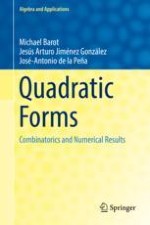This monograph presents combinatorial and numerical issues on integral quadratic forms as originally obtained in the context of representation theory of algebras and derived categories.
Some of these beautiful results remain practically unknown to students and scholars, and are scattered in papers written between 1970 and the present day. Besides the many classical results, the book also encompasses a few new results and generalizations.
The material presented will appeal to a wide group of researchers (in representation theory of algebras, Lie theory, number theory and graph theory) and, due to its accessible nature and the many exercises provided, also to undergraduate and graduate students with a solid foundation in linear algebra and some familiarity on graph theory.
